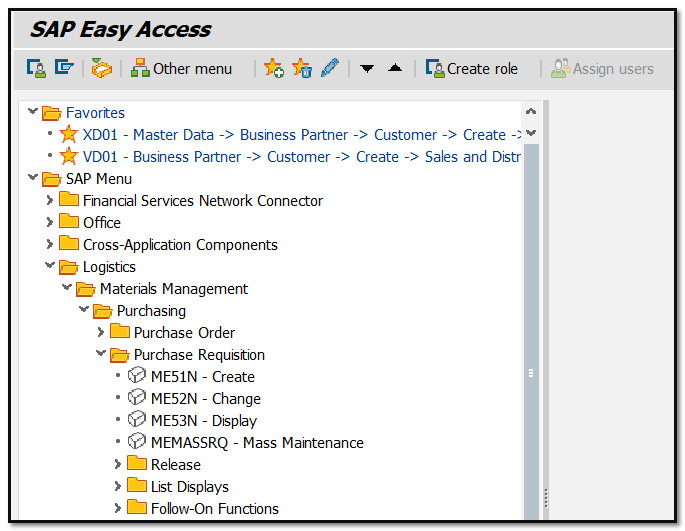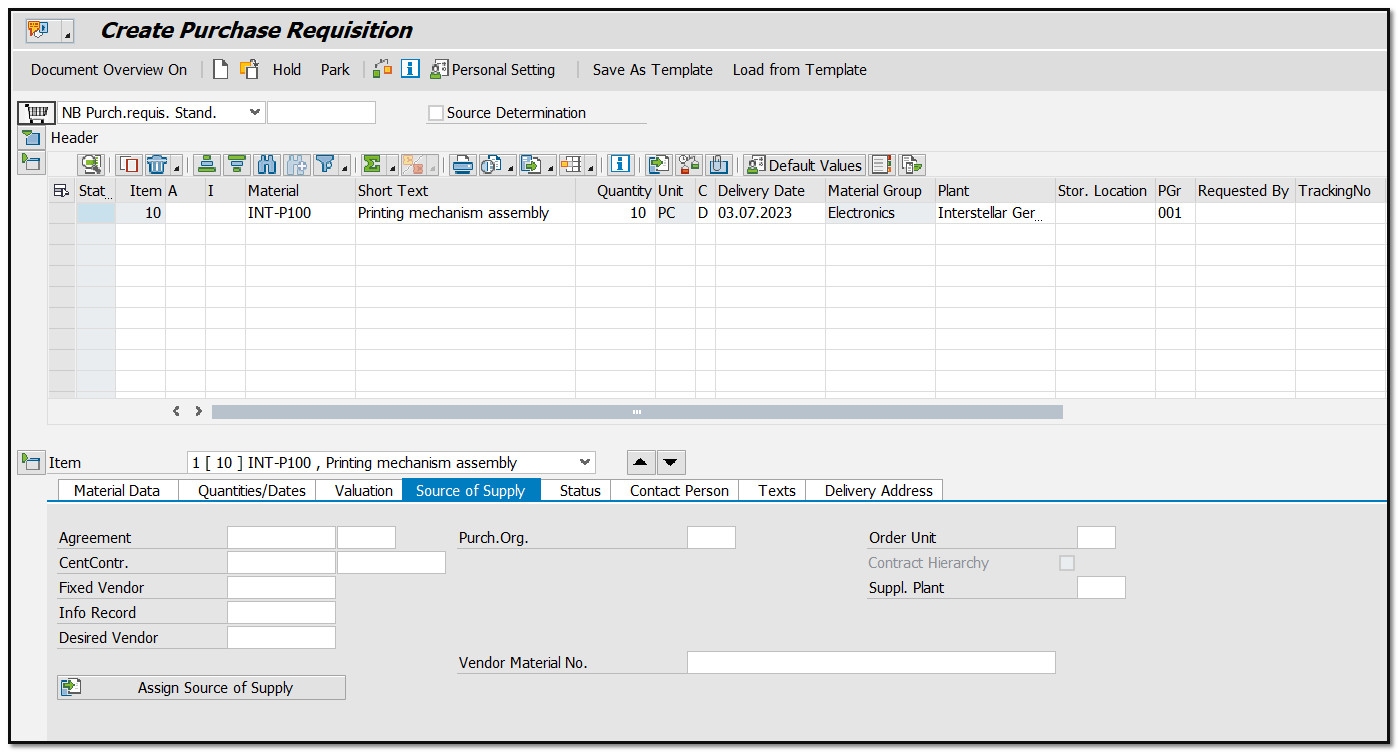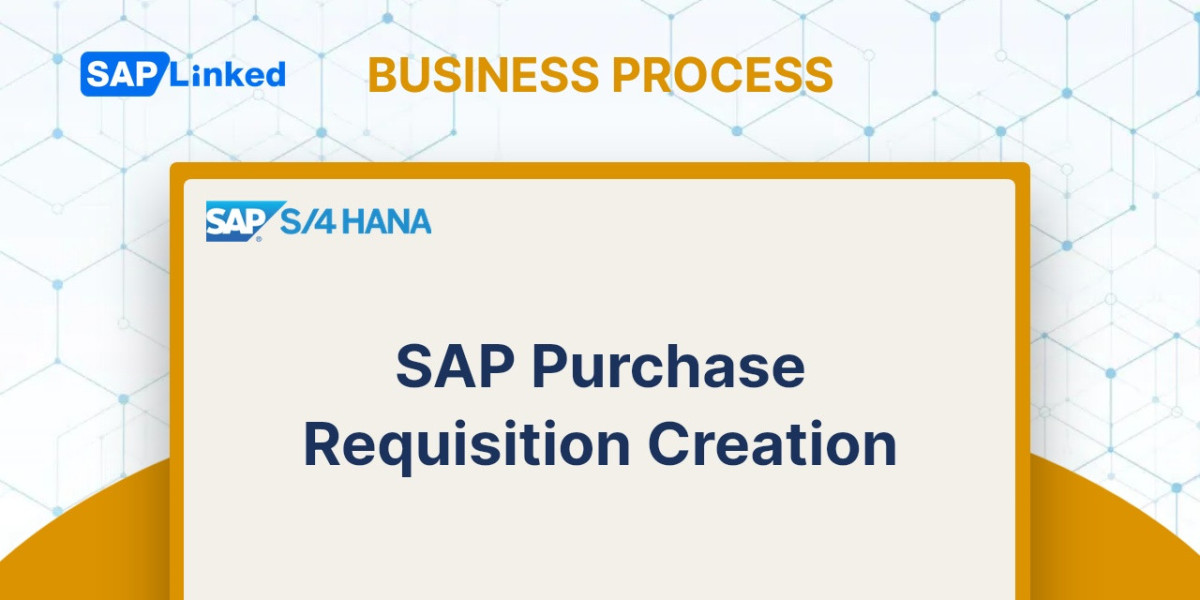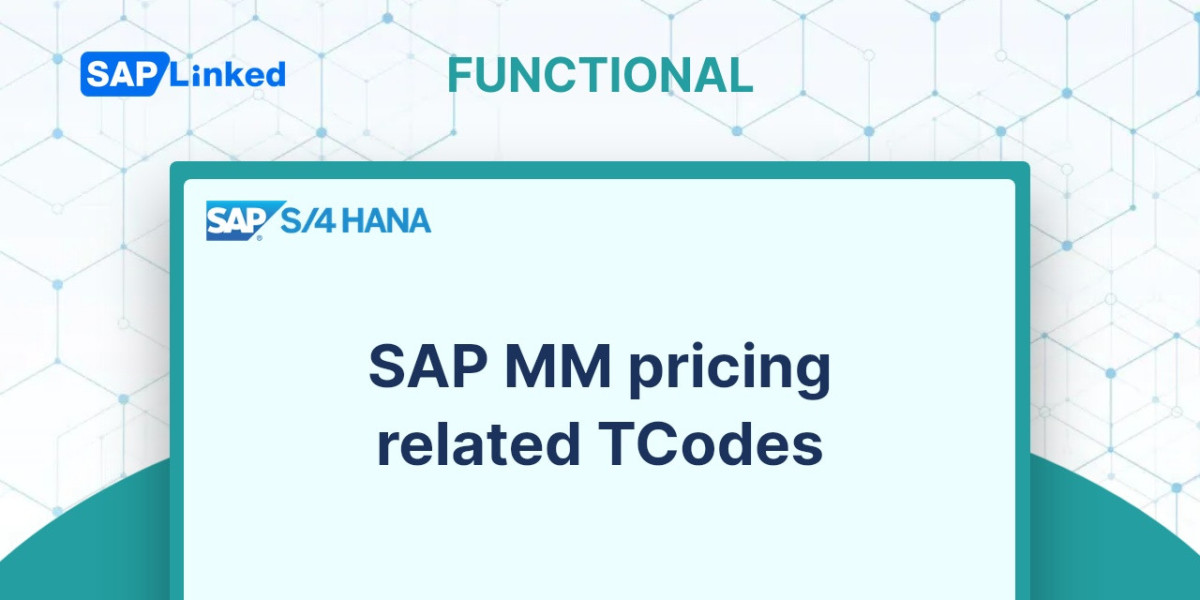The SAP Purchase Requisition is a document generated by SAP ERP during the requirement determination phase. To fully comprehend the significance and utilization of the SAP Purchase Requisition, it is necessary to have a thorough understanding of the Procure to Pay business process and the functionality of SAP ERP Materials Management.
Companies obtain goods and/or services to fulfill their needs through a set of activities referred to as the Purchase to Pay business process. SAP has introduced SAP ERP software to assist companies in managing their daily work, specifically the Procure to Pay process. SAP has developed functionality to cover the entire Procure to Pay process, which they refer to as Materials Management.
The Procure to Pay process in Materials Management revolves around a standardized cycle of actions referred to as the procurement cycle, consisting of eight steps.
- Requirement determination.
- The identification of the supplier source.
- Selection of the vendor.
- The processing of purchase orders.
- Monitoring of Purchase Orders
- Receipt of goods.
- The process of verifying invoices.
- Payment processing

Figure 1 Procurement Cycle in Materials Management
The Determination of Requirement is the initial phase of the procurement cycle, during which SAP generates a document known as the SAP Purchase Requisition.
The five major steps in the procure-to-pay process:

Figure 2 Procure to Pay Steps
SAP Purchase Requisition – Introduction
The procurement cycle begins with the determination of requirements. Users or departments can manually or automatically determine materials requirements using materials planning and control. SAP Purchase Requisition is a procedural method for requesting the purchase of goods or services. It includes information such as the material or service needed, delivery date, and quantity. SAP Purchase Requisition can be created manually or automatically.
Purchase Requisition Transactions
The SAP purchase requisition can be modified, viewed, closed, or tracked using specific transaction codes.
- ME51N – To create purchase requisition.
- ME52N - To modify the purchase requisition.
- ME53N - To show a purchase requisition.
- ME5A - To show a list of purchase requisitions based on specific criteria.
- MELB - The selected purchase requisition can be displayed by entering its tracking number.
- ME52N - To close a selected item line in the purchase requisition form, follow these steps: First, select the item line. Then, click on Edit in the menu bar, and finally, click on Delete.
- ME56 - The selected range of purchase requisitions can have a source assigned in this transaction.
Create SAP Purchase Requisition Manually
This section outlines the process by which a requisitioner can manually create a SAP purchase requisition.
To perform that action, use the transaction code ME51N or alternatively, navigate to the following SAP menu path:
Logistics ➢ Materials Management ➢ Purchasing ➢ Purchase Requisition ➢ Create

Figure 3 SAP Menu Tree - ME51N
You will be redirected to the purchase requisition create screen, as shown below:

Figure 4 SAP Purchase Requisition Create Screen
You can create a purchase requisition with a material master record or without it.
SAP Purchase Requisition with a Material Master Record
SAP business processes depend on master data for long periods of time. This data is created centrally and can be accessed by all authorized users and applications. Consequently, it is a standard approach to purchasing a product or service that already has a material master record.
In order to create a SAP purchase requisition for a material with a material master record, you will need to input the following information:
- The material number
- The quantity
- Delivery Date
- Plant
Additionally, after inputting the provided information and clicking the Enter button, the requisition process will automatically populate some of the empty fields with default information.

Figure 5 Purchase Requisition with Material Master Record
Let's explore some of the information on the purchase requisition screen. The important fields are:
Purchase requisition number - is an attribute of a configured document type. The document type determines the number ranges for SAP purchasing requisitions. The standard SAP system provides two document types: NB and TB. NB is a standard purchase requisition.
Source Determination - the system has the ability to automatically choose a source if necessary.
The account assignment category - determines the type of accounting assignment data needed for a purchase requisition, such as a cost center, cost object, general ledger account, or asset.
- U for unidentified account
- A for Asset and sub number
- F for production order number
- K for cost center and general ledger account number
- C for sales order and general ledger account number
- P for project number and general ledger account number
The plant and storage location - are entered once the destination for the materials is known.
If required, you can assign the source of supply or save the purchase requisition without vendor assignment.
SAP Purchase Requisition without a Material Master Record
The requisition for this type is created in the same manner as the requisition with a master record. However, since there is no material master record for the good or service, the following information must be entered.
- Account assignment category
- Short text for description
- Quantity
- The unit of measure
- The delivery date
- Material group
- The plant
- The purchasing group
In this case, it is necessary to enter an account assignment category to allocate the cost to a specific account. We will be using U, which will allocate the requisition to an unidentified account. There are also additional options available.

Figure 6 SAP Purchase Requisition without a Material Master Record
When you press the Enter button, an error message will be displayed as a red mark on the item line in the Status column. Furthermore, an error message will appear on the SAP status bar, instructing you to input a valuation price in the valuation tab.

Figure 7 Purchase Requisition – Valuation Price
After entering the valuation price and pressing the Enter button, the error message will disappear and the purchase requisition will be ready to save.
Create SAP Purchase Requisition Automatically
SAP purchase requisitions are automatically created when they are generated by other SAP processes, such as:
- Production Order
- Material Planning
- Plan Maintenance Order
- Project System
We will now provide a brief description of how SAP purchase requisitions are created in each of these processes:
Production Order
SAP routing and the bill of materials (BOM) determine the production order process. SAP routing is a sequence of operations and the BOM is the recipe for producing the final material. In routing, an operation may require sending a material for external processing, and the BOM may include non-stock items. In both cases, SAP purchase requisitions are generated.
Materials Planning
The consumption-based planning module has the capability to generate SAP purchase requisitions based on its calculations.
Plan Maintenance Order
A maintenance order is created for plant maintenance operations on equipment at the plant. The order includes a list of operations that need to be performed. These operations provide a systematic list of tasks and the materials needed for each step. Sometimes, non-stock materials are required, or an external operation is needed. In both cases, a SAP purchase requisition will be created.
Project System
In SAP project system, the network is an object that provides instructions to project users regarding the tasks that need to be completed, their order, and the deadline. If configured to do so, a network will generate SAP purchase requisitions for non-stock materials and external services as soon as it is released.



